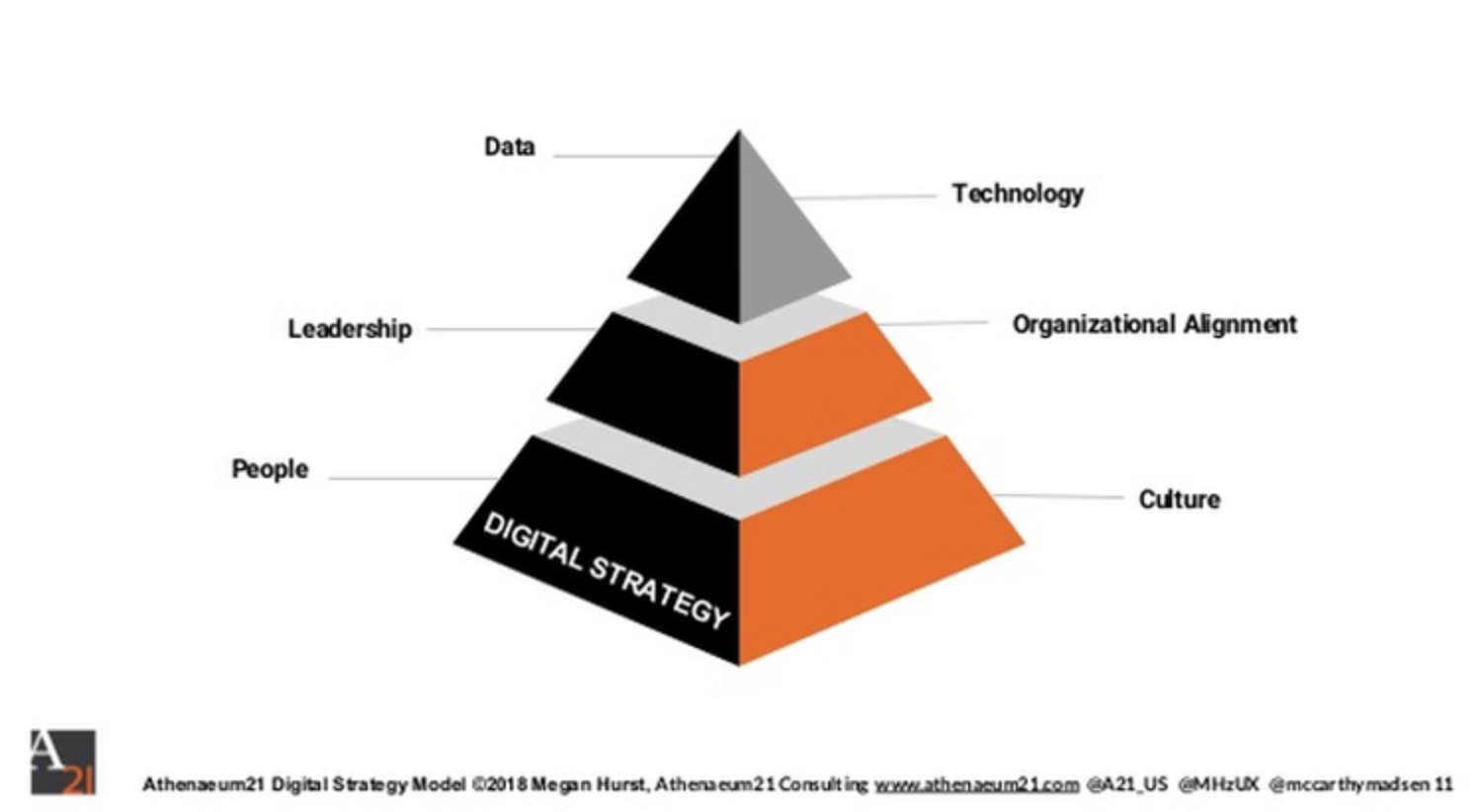Technology is not the answer: Why "digital" is not the most important aspect of your digital strategy
Shortly after its establishment in 1970, researchers at Xerox Parc invented the personal computer, complete with graphical user interface, windows, icons and a mouse. Yet, Xerox completely failed to successfully market and sell the personal computer and is still today known for making photocopiers and mainframes. In 1975, an employee at Kodak built the first digital camera. In 2012, Kodak filed for bankruptcy, having had its photographic film business disrupted by competitors invested heavily in promoting the “new” technology of digital photography. So why do large organizations (including academic institutions) fail to evolve with the times? And what is your strategy for supporting evolution and innovation in your organization? How do you adapt to and benefit from change and new ideas?
In 2018, Athenaeum21 was commissioned to conduct an environmental scan of how and why digital strategies in a range of organizations succeed, and also why they “fail.” We define “digital strategy” as “a plan of action for the adoption of institutional processes and practices to support and/or transform the organization and culture to effectively and competitively function in an increasingly digital world.”
Our research included a literature review, web review, and interviews with thought leaders and practitioners in digital transformation and digital skills-building in higher education, non-profits, and corporations. The report we produced provides examples of successful practices undertaken by organizations actively managing digital transformation and benefiting from their investments in innovation in Canada, the United States and Europe, as well as examples of so-called “failed” digital strategies. The answers as to why digital strategies succeed or fail are complex, but all hinge on six key elements that we identified during the research: 1. People, 2. Culture, 3. Leadership, 4. Organizational Alignment, followed by 5. Data, and 6. Technology
We presented our findings and model at the Fall 2018 Coalition for Networked Information member meeting, with examples of how and why people, culture, leadership, and organizational alignment are more important for digital transformation than data and technology. We invite your comments and welcome a robust discussion of how this model fits with your own local context. Please get in touch to learn how to apply the Athenaeum21 Digital Strategy Model in your organization.
About Athenaeum21 Consulting
Athenaeum21 (A21) is an international digital strategy and innovation consultancy serving organizations that want to derive more value from their past and future investments in data, information, knowledge management, and from the technologies that support them. A21’s approach includes data-driven, iterative assessment, strategy, and implementation, always aligning organizational missions and goals with end-user needs and behaviors. A21 clients include leading organizations in the research and development, publishing, higher education, and cultural heritage sectors in North America and Europe.

